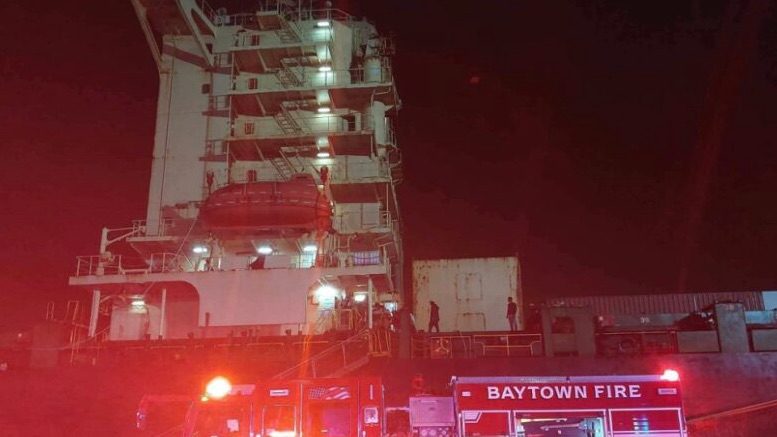28 November 2024
Containership Fire: 2 dead, 1 injured at Port of Houston

Two crew members died, and another was injured when onboard containership fire broke out while moored in the Port of Houston.
Table of Contents
Containership Fire Incident
Two crew members died, and another was injured when a containership fire broke out onboard the 2,174 TEU M/V STRIDE, moored in the Port of Houston.
The Port Houston Fire Department responded to a report of a containership fire onboard the vessel docked at the Barbours Cut Container Terminal. Two ship crew members lost their lives, and another was injured and transported to the Texas Medical Centre via a medical transport helicopter.
According to the Port of Houston, there were no other reports of injuries. The containership fire has been extinguished, and there is no threat to the surrounding community, but the Port Houston Fire Department will monitor the containership fire incident for at least 24 hours. No firefighters were injured.

New marine fire solution for boxships initiative
Roughly one ship a week loses cargo through fire onboard and a new marine fire fighting technology accelerator initiative is hoping to fix it.
Ship Nerd
The Harris County Fire Marshall and Medical Examiners are on the scene, conducting their investigations along with the U.S. Coast Guard and the National Transportation Safety Board (NTSB).
The 1997-built Panama-flagged ship is managed by Greek company Danaos Corporation and, according to VesselsValue data, it is currently under a time charter deal with Cosco Shipping Lines.
See Also
DNV has published a piece of technical news, focusing on how to identify engine room fires and take preventive measures accordingly.
Concept
Statistics show that between 2019 and 2021, there was a sharp increase in engine room fires on board container ships. Preliminary data gathered from public sources indicate that this trend applies to the global fleet – and that for 2022 to 2023, the number of engine room fires remains at the same level as in 2021. This news highlights some common causes and contributors to engine room fires.
The increase in engine room fires cannot be seen separately from the increasing number of findings related to dirty engine rooms, missing insulation, and screening of oil piping being reported by class surveyors. This is also reflected in the number of PSC detentions related to these issues.


In connection with the increasing number of engine room fires, the Paris and Tokyo MoUs launched a Concentrated Inspection Campaign (CIC) on fire safety on 1 September 2023. This CIC focuses on the means of controlling and extinguishing fires through fire dampers, fire doors, and firefighting systems.
Engine Room Fires Prevention
However, to prevent is better than to cure – therefore, we would like to highlight common causes and contributors to engine room fires. Most fires are caused by one of three situations:
1. Flammable oil leaking onto a hot surface
Although it is almost impossible to fully prevent an oil leakage from occurring and reaching a hot surface, proper implementation of the mitigating actions required by SOLAS and class rules will immensely reduce the risk of an oil leakage causing a fire.
2. Electrical fires
Electrical engine room fires often originate in the main or distribution switchboard and electrical motors or generators. Although sometimes caused by a component failure, the more common reasons are dirt leading to overheating or short-circuit, or a loose connection leading to arcing.
3. Mechanical failure
On occasion, a mechanical failure causes a fire, for example through a crankcase explosion or hot engine parts being ejected from the engine crankcase.



Engine Room Fires – 3 Causes & Prevention Tips
DNV has published a piece of technical news, focusing on how to identify engine room fires and take preventive measures accordingly.


